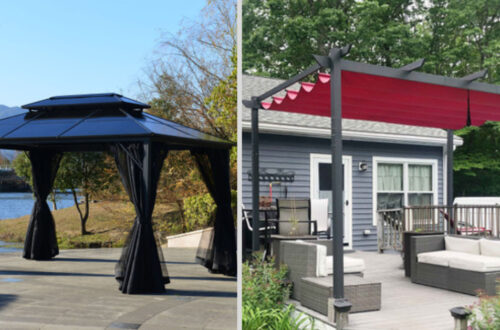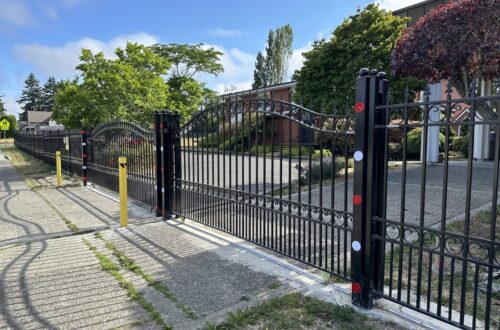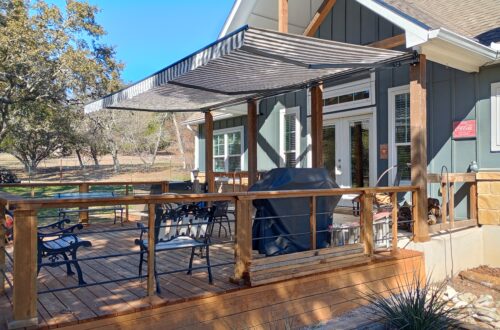If you’ve ever spent time relaxing under a retractable awning when a sudden gust of wind sweeps in, you’ve probably asked yourself, “Wait—is this thing going to hold up?” It’s a fair question. Retractable awnings and wind have a complicated relationship, and understanding just how much wind your awning can take is essential for safety, longevity, and peace of mind.
In this guide, we’ll explore how retractable awnings handle windy conditions, what features help them stay secure, and which precautions you should take during high winds. Whether you’re a weekend griller or looking for patio shade ideas for the summer season, let’s unpack the facts about wind resistance.
How Retractable Awnings Handle Wind
Wind Resistance vs Windproof Design
Let’s get one thing straight: no retractable awning is completely windproof. Even the best retractable awning isn’t designed to weather a hurricane. Instead, most are rated as “wind-resistant”—which means they can tolerate certain wind speeds safely when installed and used properly.
Unlike a fixed awning, retractable awnings are built to flex and adapt. That’s part of what makes them so useful: when the weather changes, you can respond. In the comparison of fixed awning vs retractable awning, the key difference is control—fixed awnings stay extended regardless of weather, while retractable models can be adjusted to suit changing conditions. But with that flexibility comes responsibility.
What Happens to Awnings in High Winds
When high wind gusts or sustained wind conditions hit, extended awnings can act like sails—catching air and creating force that stresses the frame, awning fabric, and mounts. This can lead to wind damage, ripped fabric, or, in extreme cases, full detachment.
And let’s not forget about heavy rain. While a light drizzle won’t hurt most awnings, pooling water during a storm combined with strong winds is a recipe for disaster.
Understanding Wind Ratings for Awnings
What Wind Speed Is Safe for a Retractable Awning?
Most residential awnings are rated to handle wind up to 20–25 mph, or roughly 4–5 on the Beaufort wind scale. Anything above that, and it’s time to retract—fast.
Commercial-grade awnings, especially those from ALEKO designed with steel and aluminum heavy-duty frames, can often withstand higher speeds, but they still have limits.
Beaufort Scale and Wind Classifications
Here’s a quick snapshot of wind classifications:
- Beaufort 0–3: Calm to gentle breeze – Safe for most awnings
- Beaufort 4–5: Moderate breeze – Caution advised
- Beaufort 6+: Strong breeze or higher – Retract immediately
Understanding these levels can help you decide when to leave your patio awning open and when to play it safe.
Where to Find Wind Ratings on Products
Always check the manufacturer’s specifications. ALEKO products, for example, include wind ratings and weather condition guidelines in the product manual and online listings. Knowing these numbers isn’t just helpful—it’s essential if you live in a windy area.

Features That Improve Wind Resistance
Durable Frame Materials
With so many types of awnings on the market, it’s essential to understand the different materials available, as they play a key role in durability, performance, and overall weather resistance. Aluminum or steel frames offer better wind resistance than cheaper materials. ALEKO’s motorized retractable awnings are built with rust-resistant metals designed for both sun protection and wind durability.
Heavy-Duty Mounting Brackets
A strong frame is only as good as its mount. Secure your awning with heavy-duty awning mounting brackets and anchors, especially if you live in an area with high wind speeds or unpredictable wind conditions.
Integrated Wind Sensors and Automatic Retraction
This is where technology saves the day. A wind sun sensor or wireless wind sensor detects dangerous gusts and automatically retracts the awning to prevent damage. With ALEKO’s motorized awning systems, adding this feature is simple and smart.
Tips for Protecting Your Awning in Windy Conditions
When to Retract the Awning
Here’s a rule of thumb: If the trees are swaying and your outdoor space starts to feel breezy, it’s probably time to retract. Even the manual awning version can be rolled up quickly with a hand crank.
Choosing the Right Location
If possible, install your awning on a side of the home or structure that’s naturally sheltered from wind forces. Avoid exposed areas where wind gusts can build momentum.
Seasonal Storage and Maintenance
For areas with seasonal storms or harsh winters, retract your awning fully and clean the awning fabric before storing it. Regular inspections help prevent wear and tear and prepare you for sudden windy days.
Motorized vs Manual Awnings in Windy Areas
Benefits of Wind Sensors
Electric awnings paired with wind sensors take the guesswork out of weather monitoring. If you’re not home and a storm rolls through, the motorized retractable awning can automatically retract before any real trouble starts.
Manual Control Precautions
If you have a manual awning, it’s crucial to stay alert. Check your weather app regularly and don’t leave the canopy extended overnight or during long outings. Sudden wind gusts can catch you off guard.
Final Thoughts: Is a Retractable Awning Right for Windy Locations?
The answer? It depends. Retractable awnings can absolutely be used in windy areas—as long as you choose a quality product, install it correctly, and take proper precautions. At ALEKO, we offer a range of wind resistant awnings built with tough materials and optional weather sensors for added peace of mind.
So whether you’re looking for a sleek retractable roof to cover your outdoor space, a rugged patio awning for summer gatherings, or a commercial-grade option for your business, ALEKO has you covered.
Just remember: Know your wind ratings, stay proactive, and let your retractable awning work for you—not against the wind.



